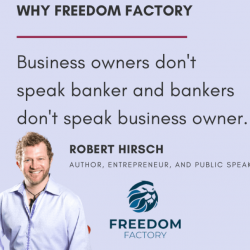3 key types of private equity strategies tysdal

To keep learning and advancing your profession, the following resources will be helpful:.
Development equity is typically referred to as the personal investment method occupying the middle ground between equity capital and conventional leveraged buyout methods. While this might be real, the method has actually developed into more than simply an intermediate private investing approach. Growth equity is often explained as the private financial investment strategy occupying the happy medium in between endeavor capital and traditional leveraged buyout strategies.
Yes, No, END NOTES (1) Source: National Center for the Middle Market. (2) Source: Credit Suisse, "The Amazing Shrinking Universe of Stocks: The Causes and Effects of Less U.S.
Alternative investments option complex, intricate investment vehicles financial investment cars not suitable for ideal investors – . An investment in an alternative financial investment requires a high degree of risk and no guarantee can be provided that any alternative investment fund's financial investment goals will be accomplished or that investors will get a return of their capital.
This market info and its importance is a viewpoint only and should not be trusted as the just crucial information offered. Details included herein http://marioqbfl279.lowescouponn.com/private-equity-in-alternative-investments has been obtained from sources believed to be trustworthy, but not guaranteed, and i, Capital Network presumes no liability for the details supplied. This details is the residential or commercial private equity tyler tysdal property of i, Capital Network.

This investment method has helped coin the term "Leveraged Buyout" (LBO). LBOs are the primary investment strategy type of most Private Equity firms.
As mentioned earlier, the most notorious of these offers was KKR's $31. 1 billion RJR Nabisco buyout. Although this was the biggest leveraged buyout ever at the time, many individuals believed at the time that the RJR Nabisco deal represented completion of the private equity boom of the 1980s, due to the fact that KKR's financial investment, however famous, was eventually a considerable failure for the KKR investors who bought the company.
In addition, a lot of the cash that was raised in the boom years (2005-2007) still has yet to be utilized for buyouts. This overhang of dedicated capital prevents many financiers from devoting to purchase new PE funds. In general, it is estimated that PE firms handle over $2 trillion in assets worldwide today, with near $1 trillion in dedicated capital offered to make brand-new PE investments (this capital is sometimes called "dry powder" in the market). .
An initial financial investment could be seed funding for the business to start constructing its operations. Later on, if the business shows that it has a practical product, it can obtain Series A funding for additional development. A start-up company can finish numerous rounds of series funding prior to going public or being gotten by a monetary sponsor or strategic buyer.
Top LBO PE companies are identified by their large fund size; they have the ability to make the biggest buyouts and take on the most debt. However, LBO transactions can be found in all sizes and shapes – . Overall deal sizes can range from tens of millions to tens of billions of dollars, and can occur on target business in a wide range of markets and sectors.
Prior to performing a distressed buyout chance, a distressed buyout firm has to make judgments about the target company's worth, the survivability, the legal and reorganizing concerns that may emerge (should the business's distressed possessions require to be restructured), and whether or not the creditors of the target business will end up being equity holders.
The PE company is needed to invest each respective fund's capital within a period of about 5-7 years and then generally has another 5-7 years to offer (exit) the investments. PE firms typically utilize about 90% of the balance of their funds for new investments, and reserve about 10% for capital to be utilized by their portfolio business (bolt-on acquisitions, additional offered capital, etc.).

Fund 1's dedicated capital is being invested with time, and being gone back to the minimal partners as the portfolio business because fund are being exited/sold. For that reason, as a PE company nears completion of Fund 1, it will need to raise a brand-new fund from brand-new and existing minimal partners to sustain its operations.




Ingen kommentarer endnu